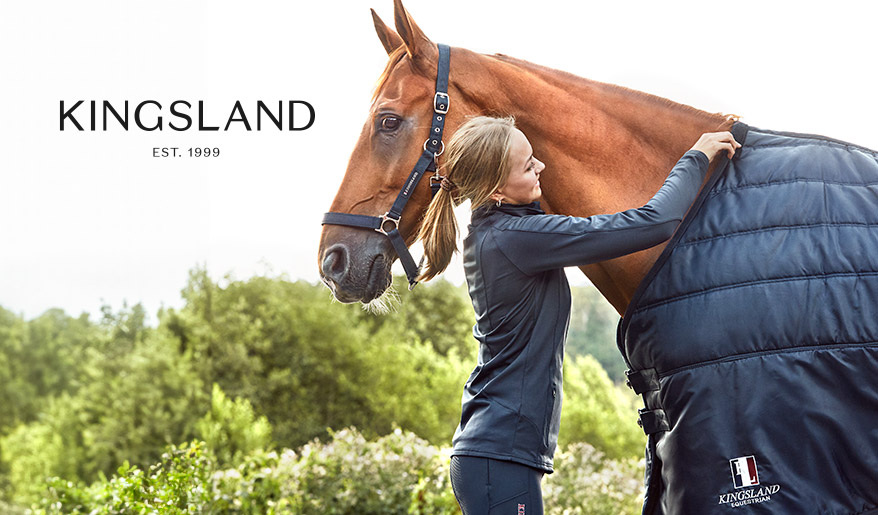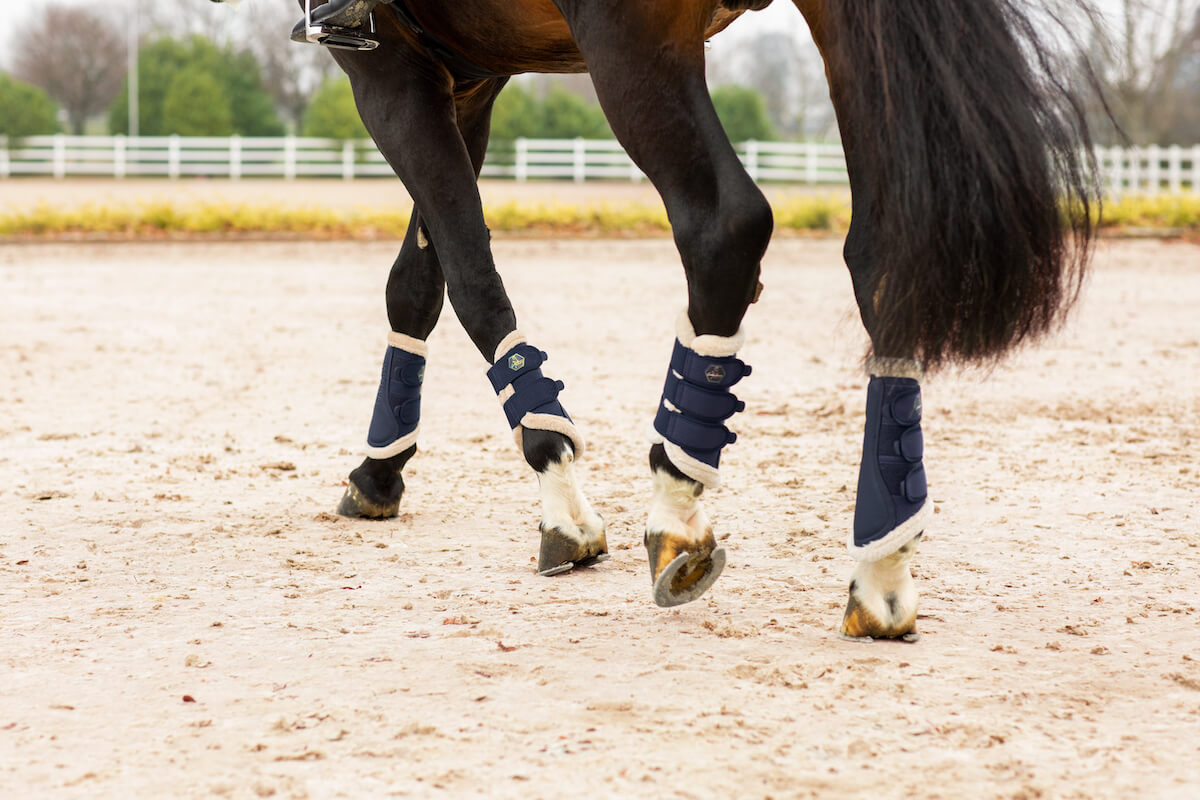
In this article, we will tell you why you should use horse boots, and what is their purpose.
A horse moving freely in nature does not need any boots...
... however, a horse's tendons experience different loads when carrying a human on his back. Also, in nature, horses do not move in a circle for 30 minutes straight - as during lunging. So, is it necessary to use boots for horses? Yes, it is! When you work with horses, you require their bodies to do unusual everyday work. Regardless of the horse's age - young, adult, or elderly - and regardless of how you work with them, you should provide the horse with protection for his legs. This protection should be sensible and fit to the training type.
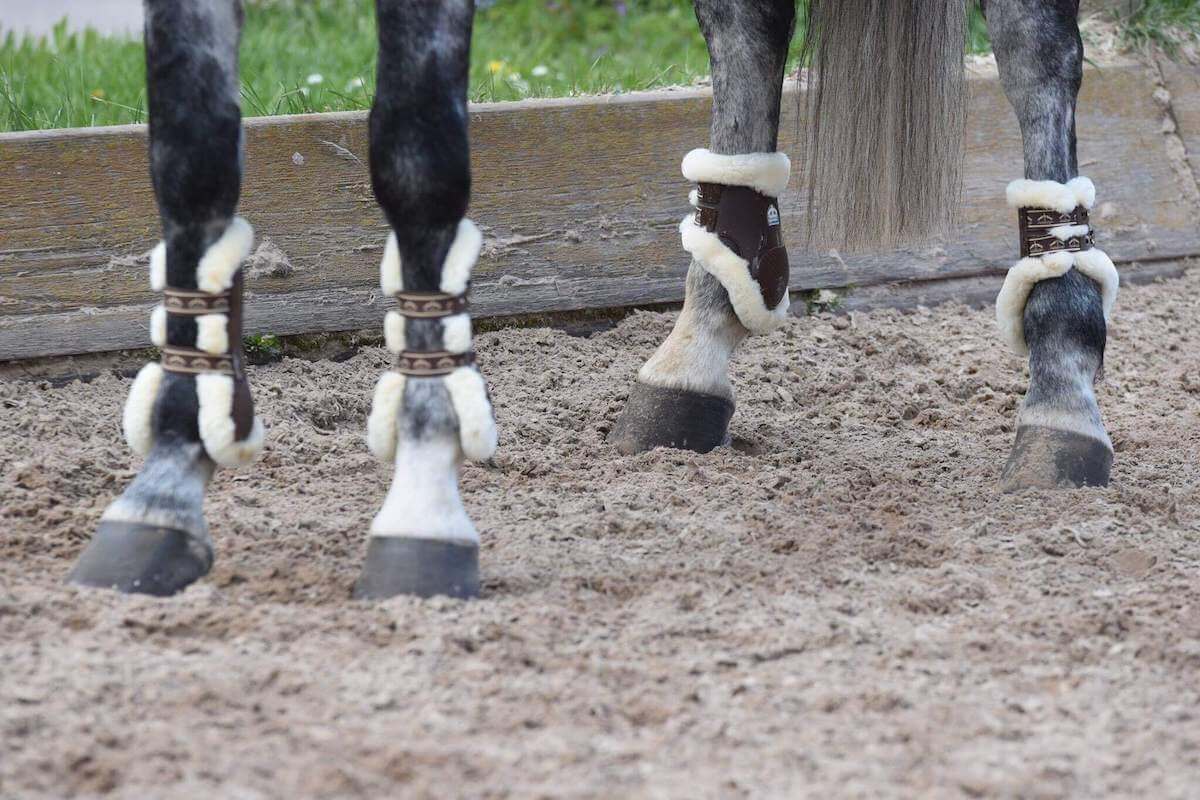
Types of horse boots
We can differentiate boots by their function:
Used during training or competitions - depending on the discipline:
Depending on the discipline, the boots may vary in their structure that serves proper protection - in jumping boots it is supposed to prevent mechanical damage e.g. while the horse strikes an obstacle's rod - but in dressage or western boots, the structure should protect the horse's legs while performing complicated technical figures that cause unusual pressure in the tendons. In both cases, the boots should prevent injuries.
Which boots protect particular parts of the horse's legs:
If the horse moves in the wrong way - that is usually caused by the horse's built deficiencies - it might cause damage that can be prevented with the use of bell boots or protectors of the heel of the hoof. An example of such an abnormality might be strickling (hooking of neighboring hooves) or when the horse's back legs step over the front ones, which usually happens during intense effort.
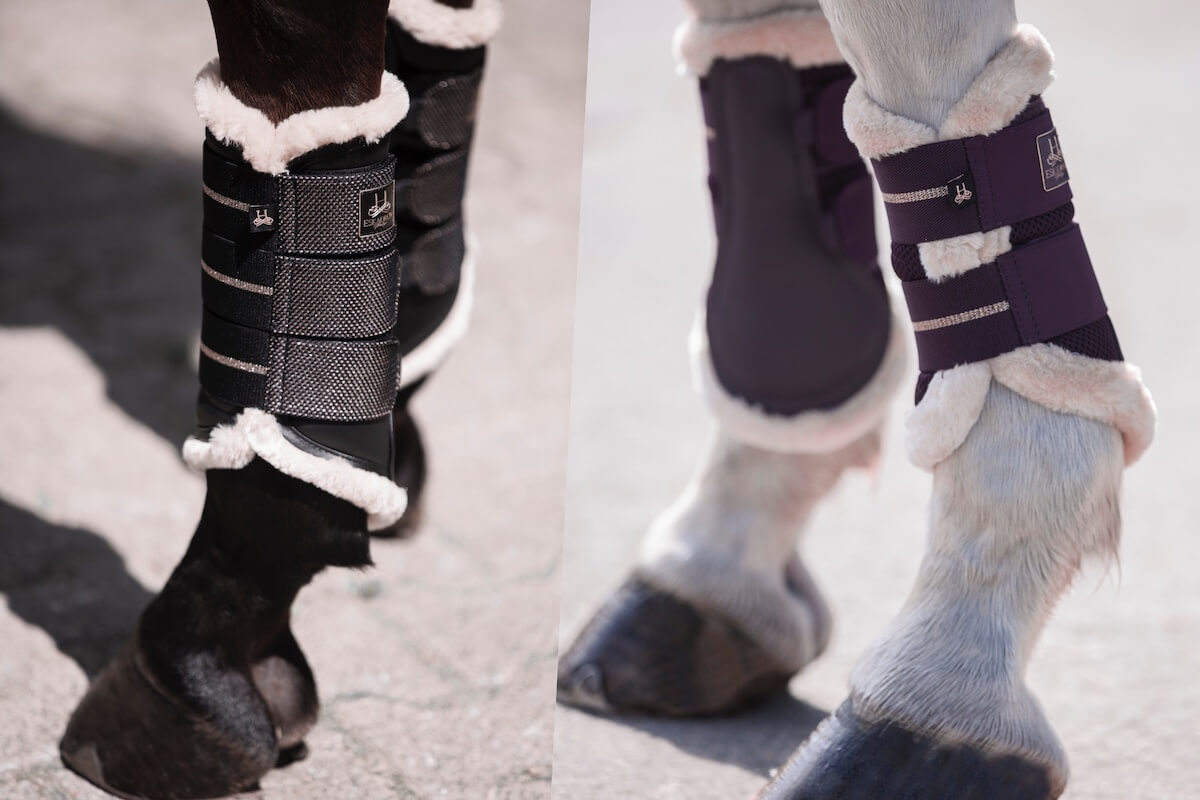
The hock and wrist joints protectors should be used if your horse has undergone an injury, to support the area prone to damage.
Used outside of training:
Boots are used to heat the horse's legs up after or in between training sessions, to improve the action of a warming ointment, to support regeneration, and prevent lymphatic swelling.
Travel boots prevent mechanical damage while transporting a horse - similar to a tail protector (the horse might damage the hair by chafing the croup over a trailer).
Magnetic boots serve easing pain and swelling, but also detoxicating by boosting the horse's blood pressure, at the same time improving regeneration processes, preparing the tendons and muscles for effort.
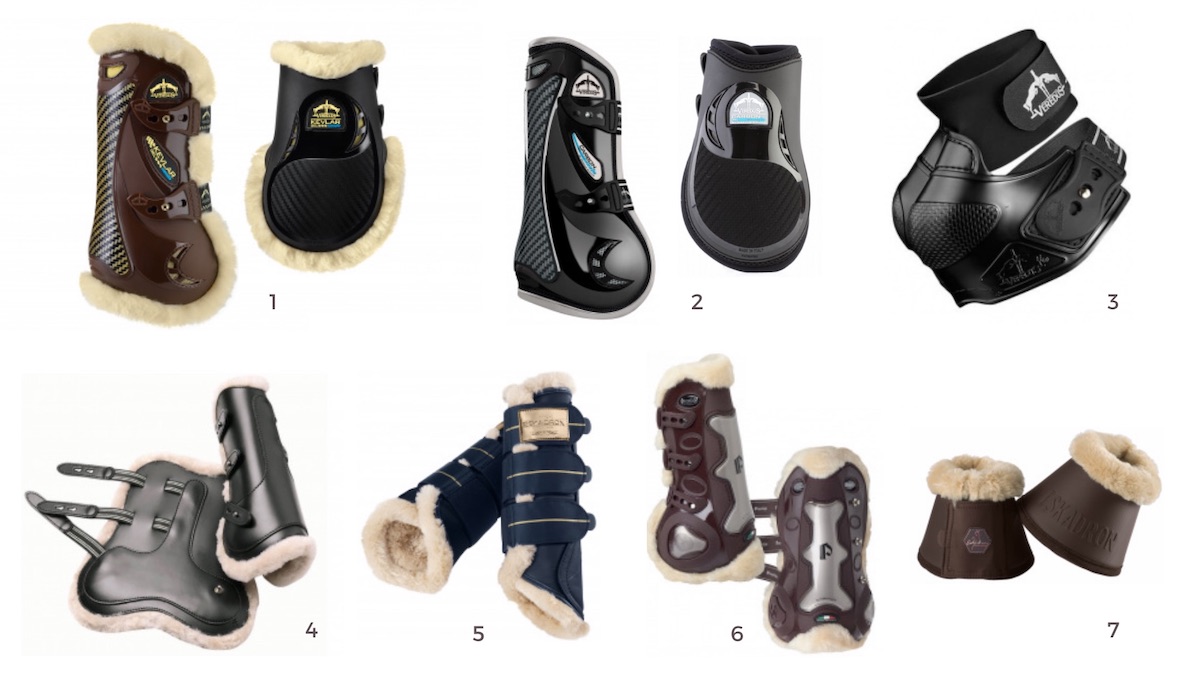
- Veredus boots Kevlar Gel Vento Save The Sheep, 2. Veredus boots Carbon Gel Vento, 3. Veredus bell boots Tekno Shield, 4. Prestige Italia boots F26, 5. Eskadron boots with fur Heritage, 6. Prestige Italia boots F46 T.Tec, 7. Veredus bell boots Tekno Shield
Horse boots for lunging
Remember that working with the horse on a lunge is one of the most demanding exercises - as the horse keeps moving in a circle. It is crucial to use boots that would protect his tendons during this effort. For lunging, the best types of protectors are dressage boots or elastic wraps.
Please, take a look at another article in which we advise when to use boots and when it's best to use bandages.
How to fit the boots to your horse?
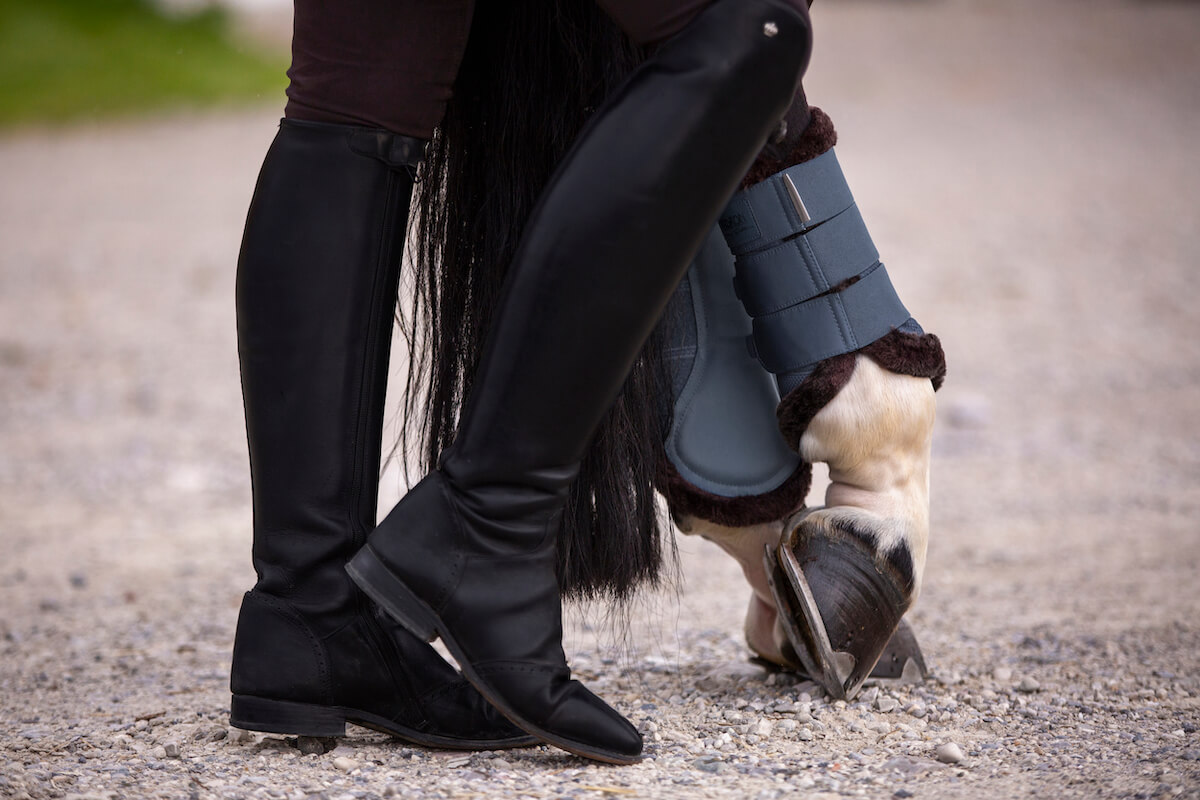
Boots shouldn't be either too big or too small. What does it mean?
The boots are too small if:
- they don't cover proper parts of the horse's legs - for example, front dressage or jumping boots should cover the whole fetlock and end before the carpus or hock of the horse's legs,
- you have trouble fastening them (then the shell itself is too small or the closure straps are too short) - it means they are too tight.
The boots are too big if:
- they go over the carpus (of the front legs) and hock (of back legs) or they reach over the fetlocks,
- fastening the boot on the "last loop" does not keep it in its place and it shifts while the horse moves.
It's good to take a look at a fastened boot shown on the product's package. Producers make sure that their products are perfectly fit, fastened, and presented on the horse's legs during a photoshoot.
While choosing boots for your horse, it is important to mind their size, function, and materials of which they are made. On the market, you will find:
When choosing boots for their material, you should pay attention to the ground surface on which you train. If you train on a hall or a manage with a dry and well-tended ground - you have full discretion. If you train outdoors only because you have no access to an indoor hall, you will make the least use of leather boots - they react rather badly to humidity (e.g. muddy terrains) and you should not clean them in a washing machine.
Also, it is good to pay attention to the type of fastening of the boots. Definitely, the best type of fastening is hook and eye as it allows for quick putting on and off the boots. What is more, it guarantees even fastening of the boots due to evenly placed wholes on a rubber tape surrounding the leg (which is hard to feel out with velcro closure). Such a type of fastening also prevents it from undoing itself during a training session or a competition (which, unfortunately, happens with velcros).
It's worth having more than one pair of boots so that you can freely change them depending on the surface or type of training, as well as clean them.
How to put the boots on?
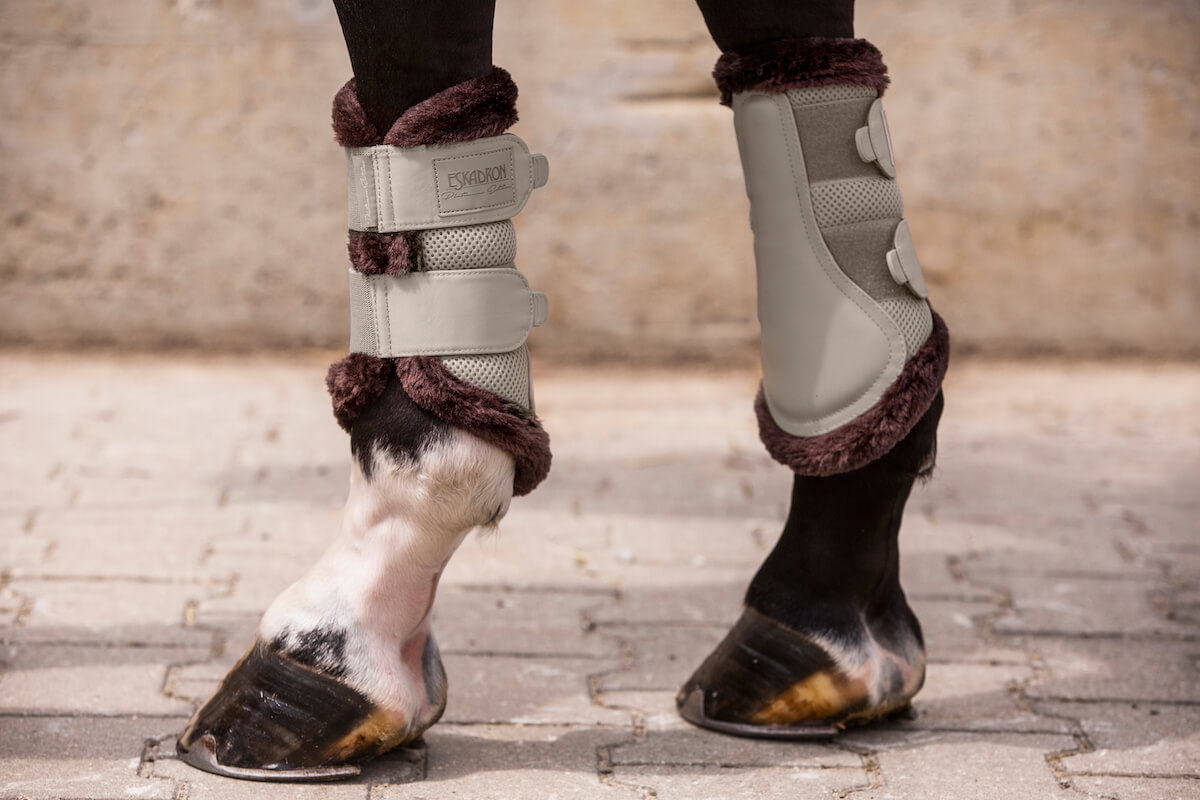
With most boots, you should remember a couple of things while putting them on your horse's legs:
Boots for front legs usually differ from the back ones - with their structure or length - e.g.:
- boots protecting the horse's legs only on the inner side (e.g. dressage boots) have a shorter front and longer back,
- jumping boots have smaller and differently built back boots than front ones,
- often, you can find the information which boot is a front one and which is a back (hind) one on the boots themselves.
- Left vs. right boots - most producers mark them with letters (R - right, L - left). If you cannot find such a mark, remember to fasten a boot in such a way that the direction of fastening goes from the front to the back. This is to prevent the air direction from undoing the fastening while the horse moves, especially with velcro straps.
- Rightly fit boots should be put on a bit too high so that you can shift them down a bit after you fasten them, which will help you make sure they cover the horse's whole fetlock but do not stick over it. You should slide the boot down with the nap so that the horse coat lies comfortably under the boots, which might prevent possible chafing.
- Remember that wet neoprene shrinks so boots made partially or wholly out of neoprene would fit tighter to the horse's legs after he sweats. You shouldn't put them on too tightly not to hinder blood flow in the limbs.
How to clean horse boots?
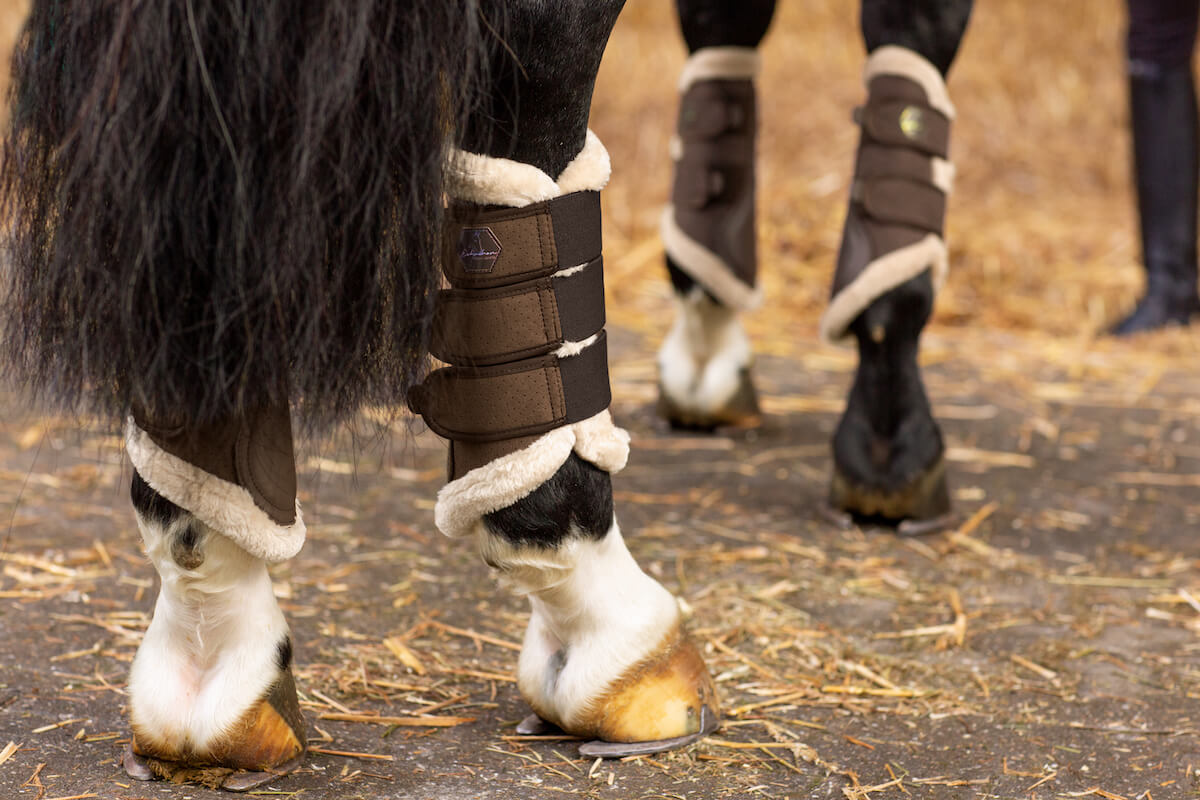
An answer to this question is - it depends on how and what they are made of.
- Boots made out of 100% material e.g. neoprene ones with faux fur could be washed at 30 Celsius degrees in a washing machine (unless instructed otherwise by the producer).
- Leather boots should be cleaned with a damp cloth and polished with oil or leather soap after drying. This will help them stay elastic and fitting to the horse's legs and their surface should not break.
Boots should be regularly cleaned, especially on the inside, as the horse's legs sweat during the effort, which means the boots will be covered with salt, hair, and mud. Keeping boots clean will help prevent chafing.
Remember not to put wet boots on your horse - it might result in chafing. Superficial skin damage is an easy way in for bacteria.
Boots are one of the most important elements of equestrian equipment. The legs make the horse, thus you should invest in high-quality boots that would serve you and your horse for years, fulfilling their purpose and providing protection for your horse, especially during intense training.
Any questions? Call us or write an e-mail.
Latest news from the equestrian store Equishop:














